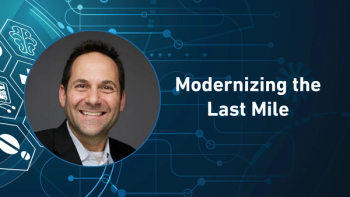
- Pharmaceutical Commerce - January/February 2009
Examining the ROI of personalized medicine
New Deloitte study finds “profound” positive and negative ROIs for combined therapies and diagnostics based on genetics
Everyone says that personalized medicine is coming—some would say it has already arrived—but the broader implications—and utilization—remain unclear. While there are hundreds of proposed diagnostic tests that would point to a modified drug therapy, only a few routinely are supported by insurers, because the overall economics are unfavorable in many cases.
That’s the background to a new study, from the Deloitte Center for Health Solutions, that was unveiled in late January. Called “The ROI for Targeted Therapies: A Strategic Perspective Assessing the Barriers and Incentives for Adopting Personalized Medicine,” the report found that under certain circumstances, personalized medicine would have negative ROI for manufacturers (such as when a diagnostic indicates not to use a certain drug), and for diagnostic test services (such as when a one-time test is performed, but it not reimbursed sufficiently). Consumers have a positive ROI in nearly all cases (even factoring co-pays or self-pays into the equation), and payors have a positive ROI if and when the diagnostic leads to an improved health outcome, ultimately reducing healthcare costs.
The point isn’t to figure out where the bucks are to be made, but to structure the combination of R&D, delivery and diagnostic-test costs on the manufacturer/provider side, and the payor/consumer costs and values on the other, so that personalized medicine can go forward for all stakeholders.
Deloitte defines personalized medicine as “the use of molecular analysis of genes, gene expression, proteins, and metabolites to achieve optimum health outcomes in a person’s disease or disease predisposition.” The science depends on pharmacogenomics, the “study of the genetic basis for individual variation in drug response.” When a diagnostic test is used to modify or add to a drug regimen, the result is a “targeted therapy,”—one that is selected based on the genetic profile (or “phenotype”) of the patient.
Two scenarios
Pulling together all factors for most types of genetic testing and most types of diseases is impossible, given the inchoate nature of personalized medicine today. Deloitte simplified the process by doing a literature search of relevant applications, and then doing a more detailed analysis of one type of personalized medicine, the tests and drugs for newly diagnosed breast cancer. That application also happens to include the possible “scenarios’ that Deloitte wanted to analyze (Figure):
- Test results that alter the standard course of therapy
- Test results that indicate additional targeted therapy required
In the case of newly diagnosed breast cancer, the Oncotype DX test from Genomic Health can indicate that chemotherapy will have very limited effect in changing the outcome of the treatment (thus, the test alters the standard course of therapy); the so-called “FISH” (fluorescence in situ hybridization) test can indicate that the use of an adjuvant drug such as Herceptin (thus, the test indicates additional targeted therapy).
A rough calculation for the net value of an intervention would be: the reduced adverse events plus reduced medical and nonmedical costs, plus improved quality of life, less the cost of the intervention. The stakeholders in this exercise are: consumers (patients), diagnostic companies; biopharma manufacturers; and payors. (Healthcare providers and employers, two other potential stakeholders, were not included.) A subset of biopharma is “personalized medicine therapeutics companies,” who “manufacture, market and sell molecular-based therapies.”
Deloitte then calculated annual costs for the various scenarios and outcomes:
Scenario 1
Consumers: a positive ROI within the first year, increasing with each additional year either because no therapy is required, or because the patient is better informed about disease recurrence
Payors: a positive ROI after about six years, which represents a challenge if the average turnover rate among members is shorter
Bioharma: a consistent negative ROI, because the potential customer base is reduced
Diagnostic companies: a positive ROI, from sale of the test.
Scenario 2
Consumers: a positive ROI once initial adverse events and negative quality-of-life are factored out, and the benefits of reduced risk of recurrence are factored in.
Payors: no positive ROI, but Deloitte views this as a “framework limitation” that doesn’t permit evaluating attracting more members, or safer treatment
Biopharm: a positive ROI, mostly from the sale of target therapies. This ROI is dependent on the duration of the R&D cycle to develop a targeted therapy
Diagnostic companies: no ROI in most cases, as the initial testing is not sufficient to offset the development costs of the test. “Personalized medicine diagnostic companies most likely to experience positive [ROI] are those that can command high prices per test and provide testing for clinical conditions that require repeated diagnostic testing,” concludes Deloitte.
Setting policy
The mixture of incentives and disincentives in personalized medicine make it a “disruptive innovation,” says Deloitte. “The healthcare industry has had limited success in documenting the critical value of new therapies in economic terms. Personalized medicine will likely face the same, if not a greater, challenge given its expense and disruptive nature to current markets,” it says.
The situation could evolve to a point where new legislation is needed; Deloitte sees a parallel with how the Orphan Drug Act, which provides incentives for manufacturers to develop therapies for smaller patient populations. Possible legislative actions could include
- tax benefits
- prolonged product exclusivity for patent holders
- funding collaboratives that could address the problems of patient recruitment and better data collection
On the business side, Deloitte sees the potential value of biopharma manufacturers either acquiring diagnostic companies outright, or to build stronger partnerships with them. Also, they “should start to consider strategies to integrate marketing, sales and distribution with companion diagnostics to improve the cost effectiveness of these activities,” highlighting the supply-chain challenges of matching a diagnostic test with a targeted therapy.
The report is available at the Deloitte Center for Health Solutions (
Articles in this issue
over 16 years ago
Closing The Circle On Patient Adherencealmost 17 years ago
3PLs Rise in Forward-Thinking Supply Chain Modelsalmost 17 years ago
A Pitched Battle in Cardiovascular Drug Marketingalmost 17 years ago
Wyeth Loses Supreme Court Case Over 'Implied' Pre-Emptionalmost 17 years ago
Syringe Design Gets a Makeoveralmost 17 years ago
Refinements in Cold Chain Secondary Packagingalmost 17 years ago
Inmar Rebrands Reverse-Logistics and Related Business Unitsalmost 17 years ago
The Packaging Contribution to Patient Adherencealmost 17 years ago
Moving the Dial on Patient AdherenceNewsletter
Stay ahead in the life sciences industry with Pharmaceutical Commerce, the latest news, trends, and strategies in drug distribution, commercialization, and market access.



